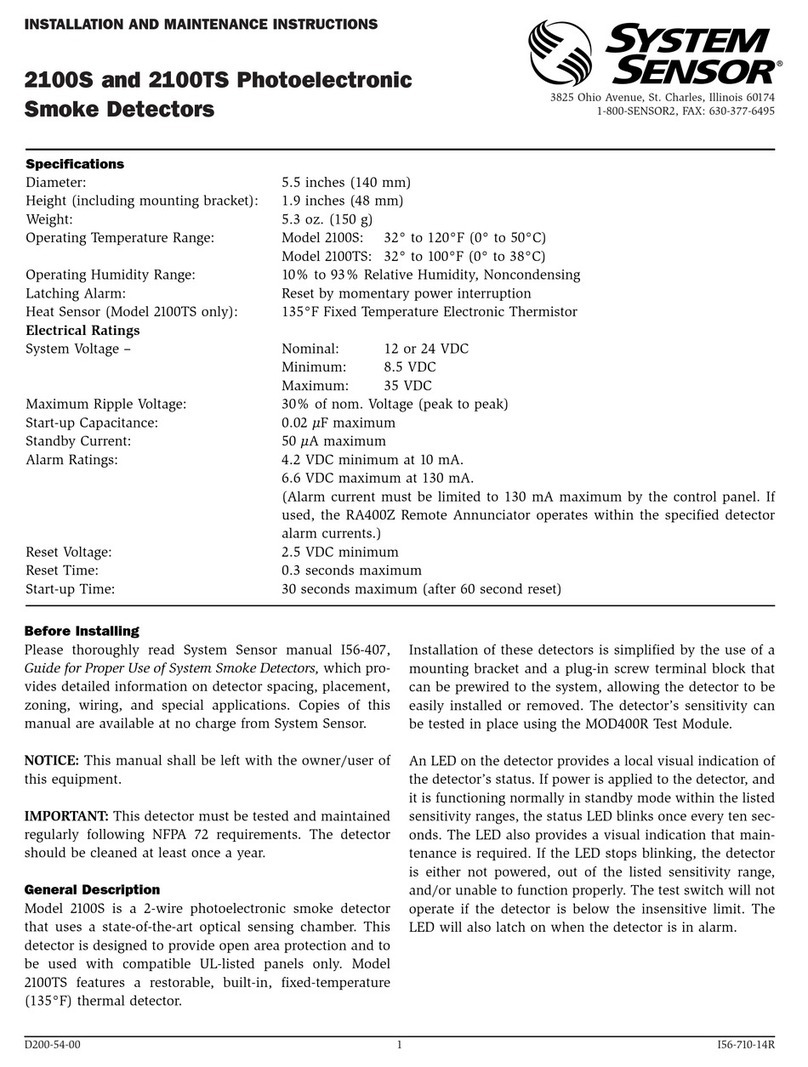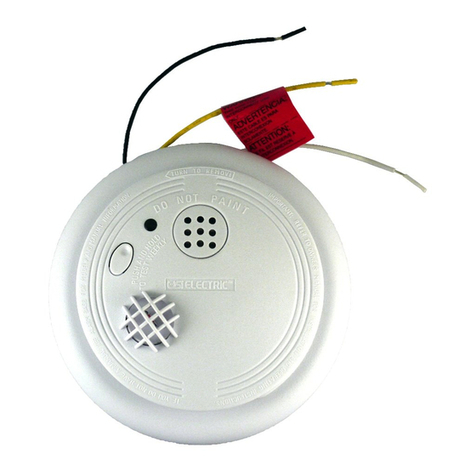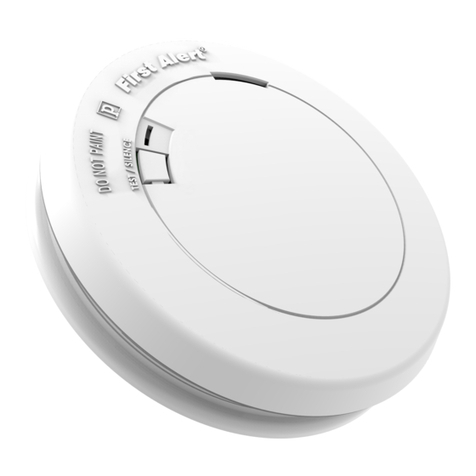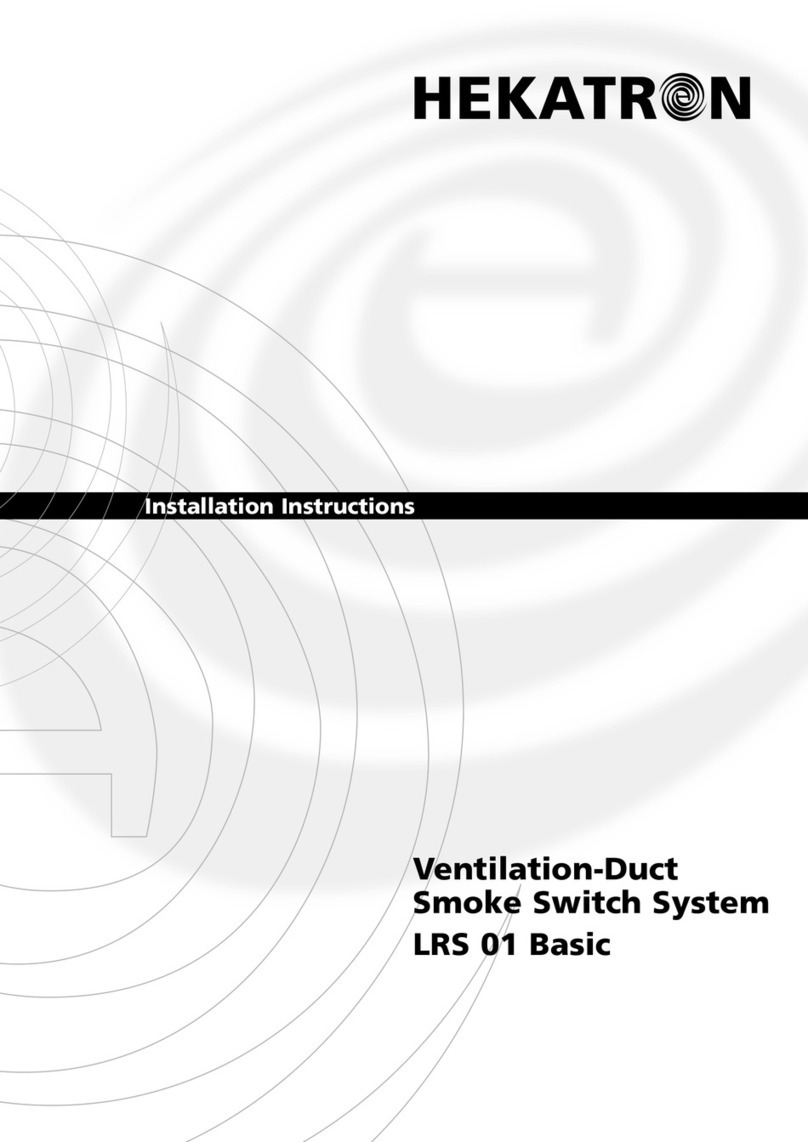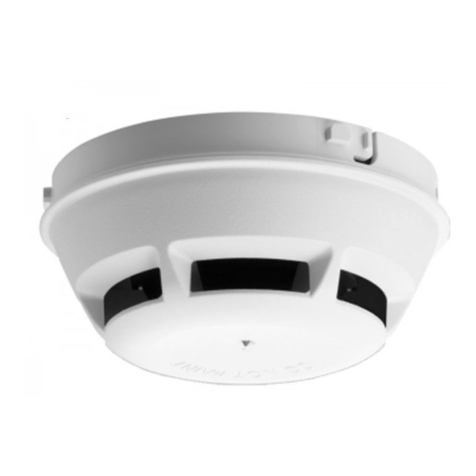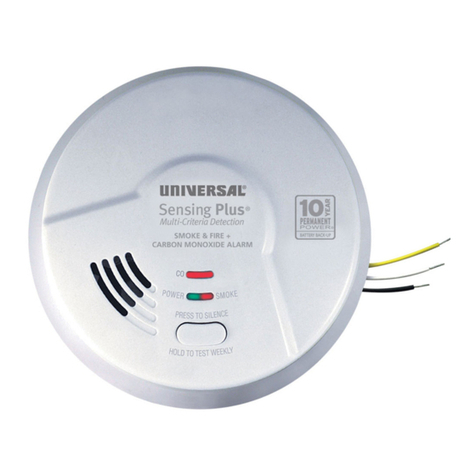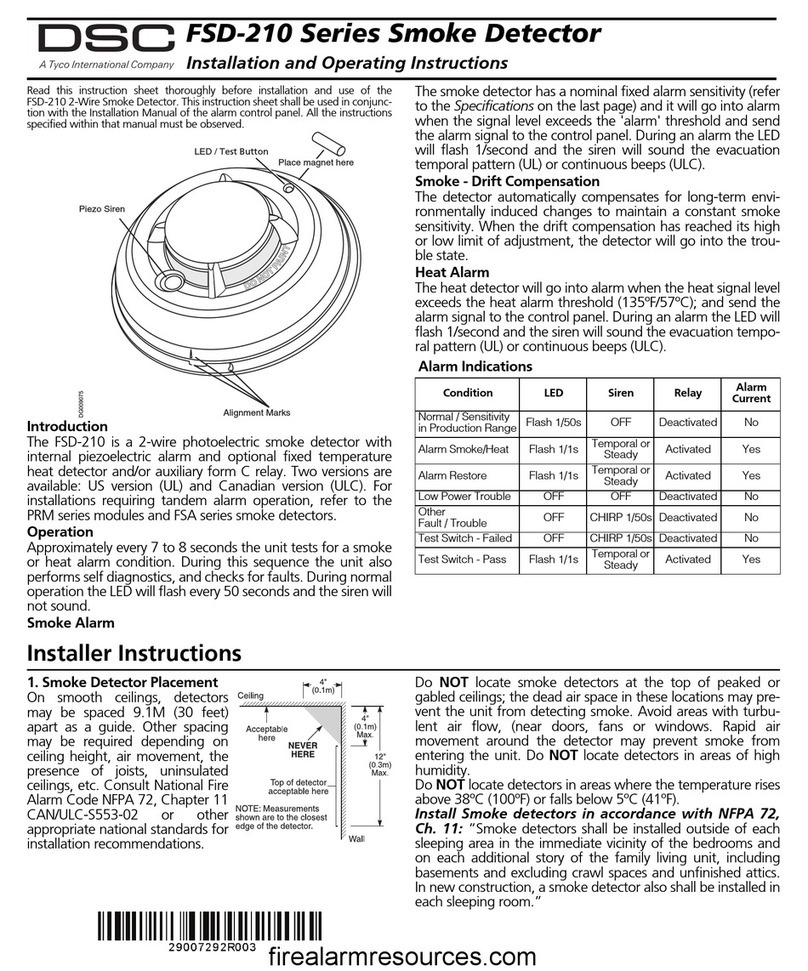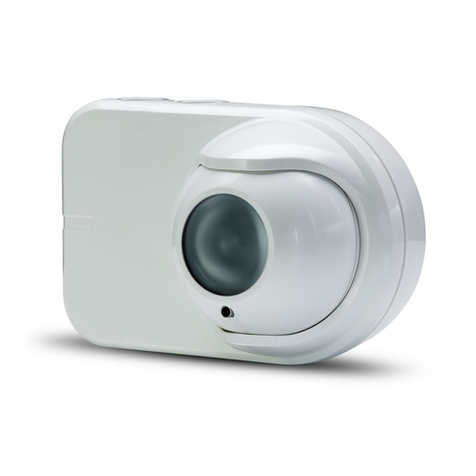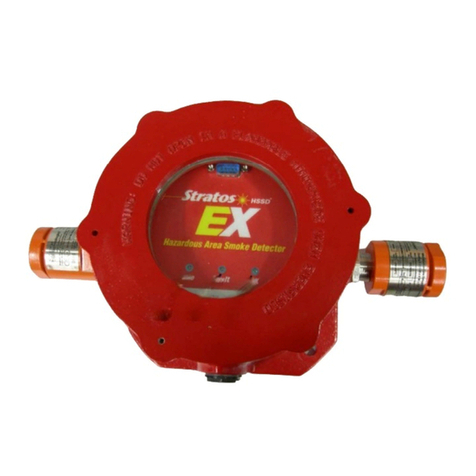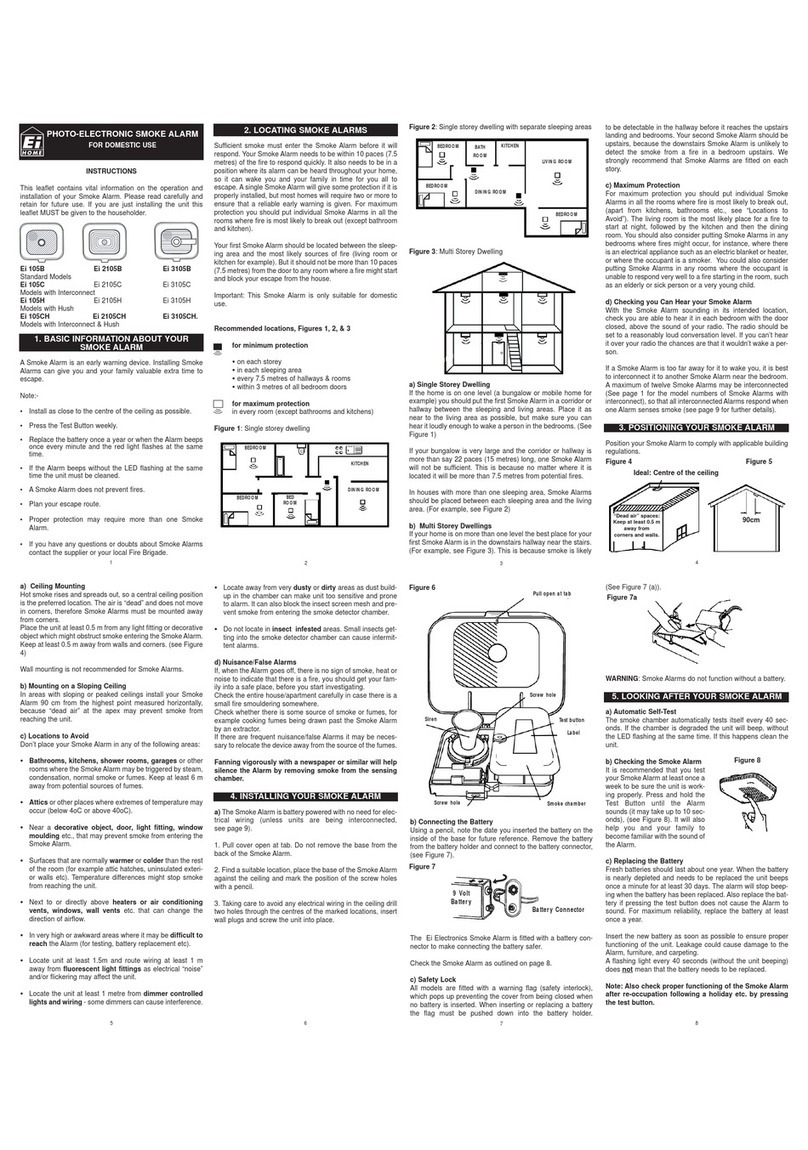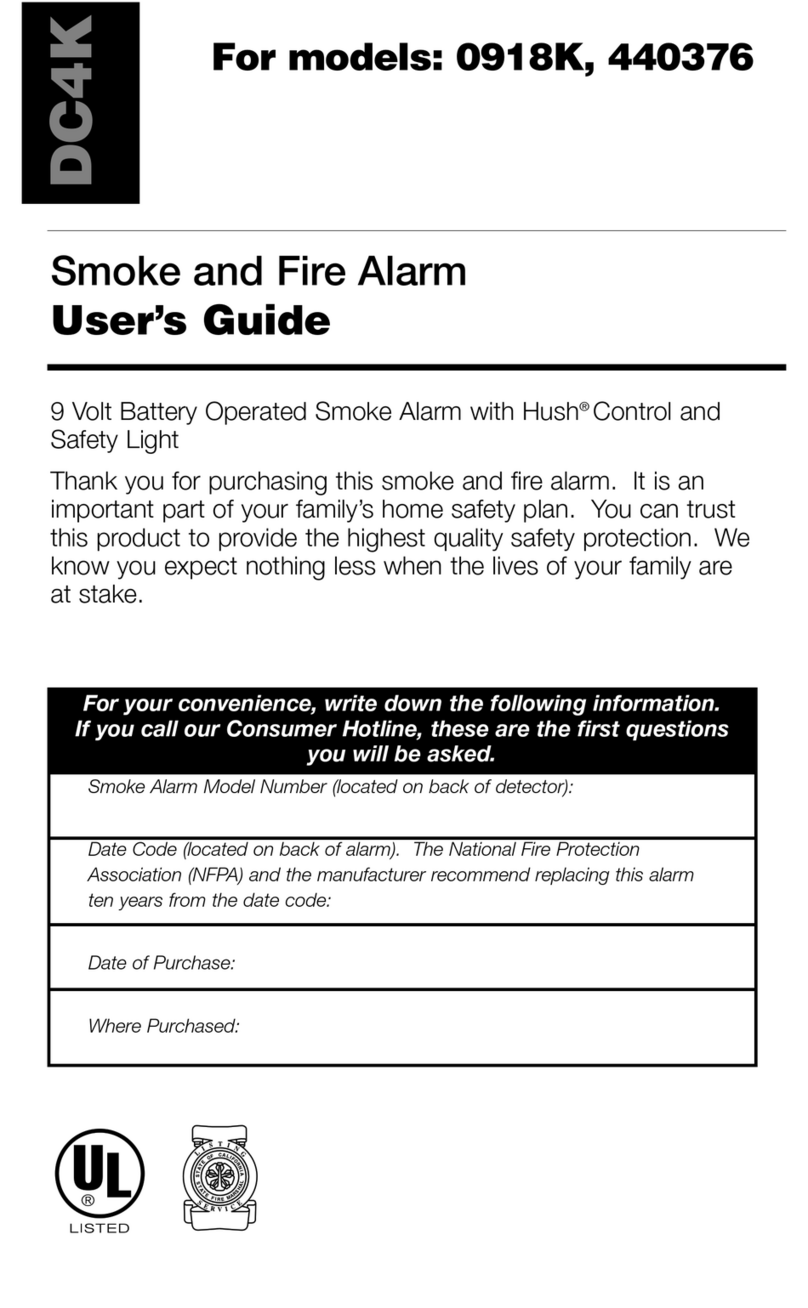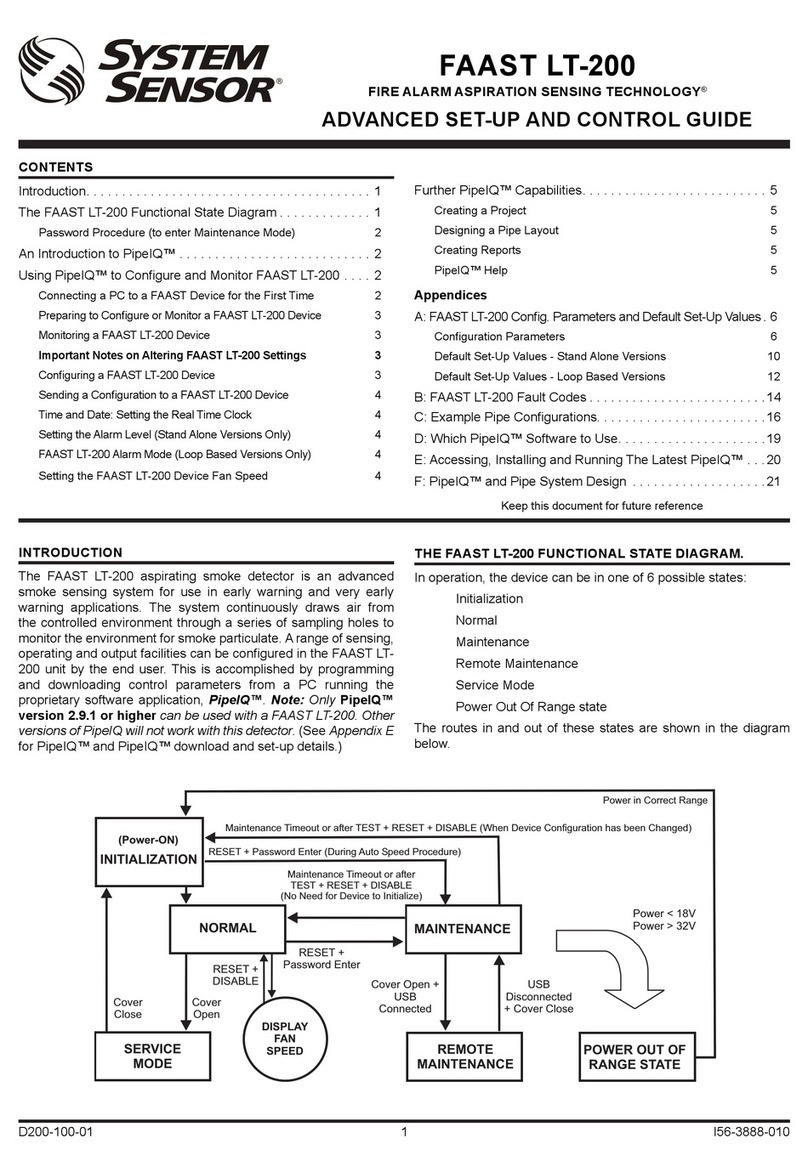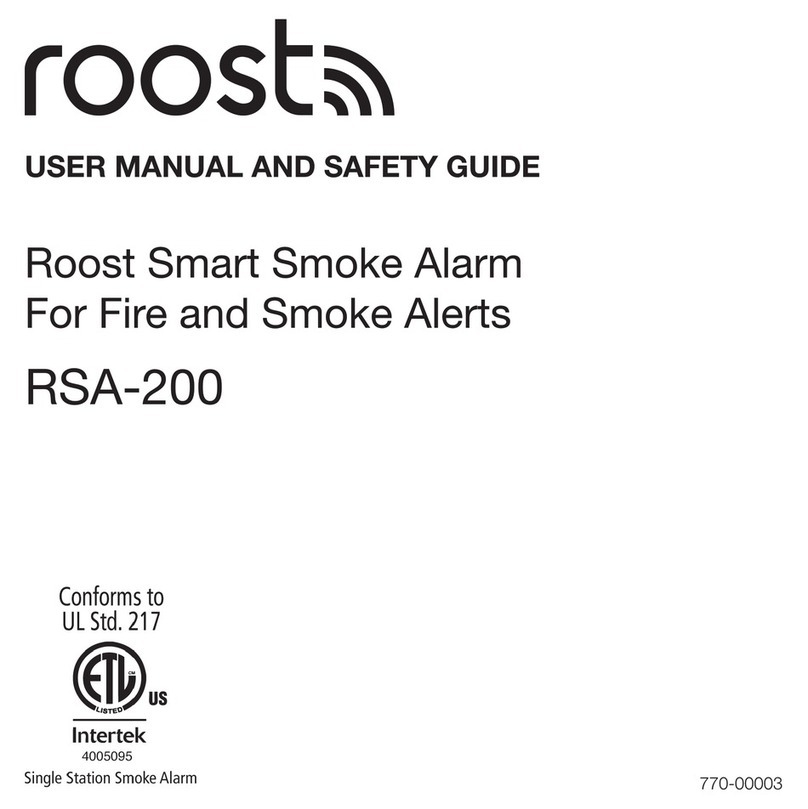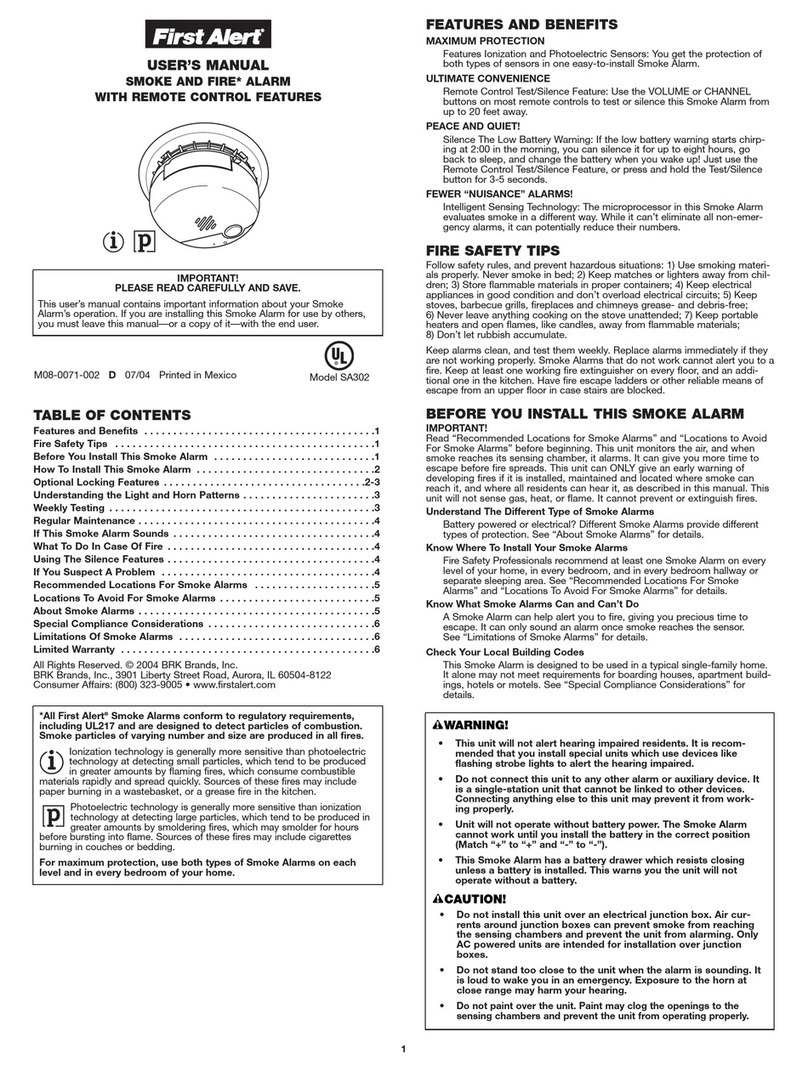
DEKON D-BM100 OPTICAL BEAM
SMOKE DETECTOR
Doc:UM-D-BM100-0717-EN Page 6/16
4 DESIGN
The D-BM100 detector design is shown on Fig. 1 and Fig. 3. The detector housing, made of plastic, contains
electronic circuits and optical elements of the transmitter and receiver as well as a laser diode that facilitates
the detector easy optical alignment. The lenses for infrared beam focusing are covered with a detachable
filter. There is a connecting block mounted on the detector back side, to connect power supply wires and
terminal blocks for PU and PA relay contacts. The detector is fastened to the wall with a metal adjustment
basis. START button that initiates the detector adjustment process as well as an optical fiber for illuminating
diodes are located on the bottom of the detector. During the auto alignment process the built-in led indicator
blinks every 2 s with either yellow or green light.
The illuminating diode colour signals mean:
- green –detector self-adjustment to the distance between detector and reflector/set of reflectors is in
progress and the signal level is too high;
- yellow –detector self-adjustment to the distance between detector and reflector/set of reflectors is in
progress and the signal level is too low;
The alignment process lasts ca 30s. After successful alignment the indicator of the detector blinks with a
green light once every 10 s informing about the proper operation of the detector. In case of any fault including
failure of the alignment process the same indicator blinks with a yellow light once every 2s.
The START button enables initiation of the detector adjustment process (self-adjustment) and the reset of
detector’s parameters after cleaning works of optical parts during detector’s operation.
The beam smoke detector indicates the fire alarm with the indicator lighting with continuous red light.
5 INSTALLATION
The D-BM100 detector interoperates with a set of reflectors D-BM100-4 (operating distance is from 50 m to
100 m), or with the D-BM50-1 prism reflector (operating distance is from 5 m to 50 m). Set of reflectors,
single reflector, test foil and an adjustment mirror are not included in the detector standard pack and should
be ordered separately.
In case when the detector is hardly visible or is installed in a place with difficult access, it is possible to connect
the additional operation indicator WZ-31, placed in a convenient and visible location.
Before installation, it is necessary to declare an alarm mode and a sensitivity threshold. This can be done
using appropriate jumpers located on the back side of the detector casing, as shown on Fig. 6. The distance
between the detector and the reflector/set of reflectors shall be one of the key criteria taken into
consideration when defining the sensitivity:
-for a distance from 5 m to 20 m –18% sensitivity is recommended;
-for a distance from 20 m to 100 m –30% sensitivity is recommended;
-for a distance from 50 m to 100 m –30% or 50%* sensitivity is recommended;
* 50% sensitivity threshold is not LPCB approved.
In case of the detector’s hard operation conditions it is possible to set sensitivity level experimentally,
adopting it to the particular environment. The D-BM100 detector and the reflector/set of reflectors are
mounted on opposite walls, pillars or other construction elements of the premises. Walls or pillars must be
stable and vibration-free. The detector should be placed on the adjustment basis (Fig. 3) after preliminary
connection of the wires to the connecting blocks in accordance with Fig. 4. The detector should be fixed to
the basis with three screws that are accessible from the front side (after removing the cover). Then a 6F22
battery should be plugged to the laser pointer contacts.
Before alignment, the mirror should be placed on the set of reflectors and pressed down, as it is shown on
Fig. 9.The detector laser beam should be aimed at the center of the reflector or the mirror using three
positioning screws. The adjustment screws help in precise alignment so that the laser beam returns to the
detector’s front plate after being reflected from the reflector. The mirror should be removed after proper
















